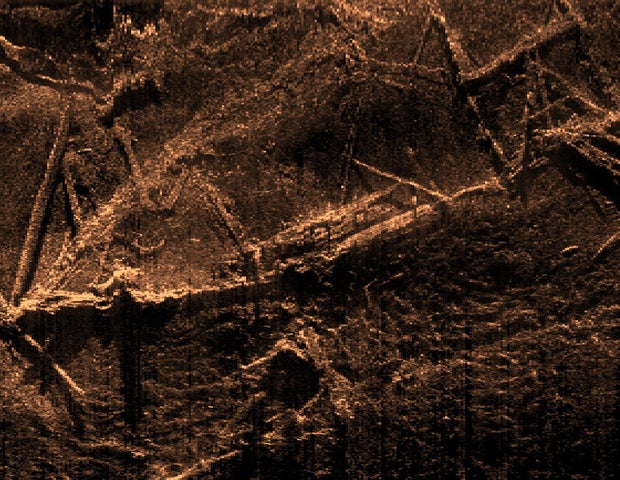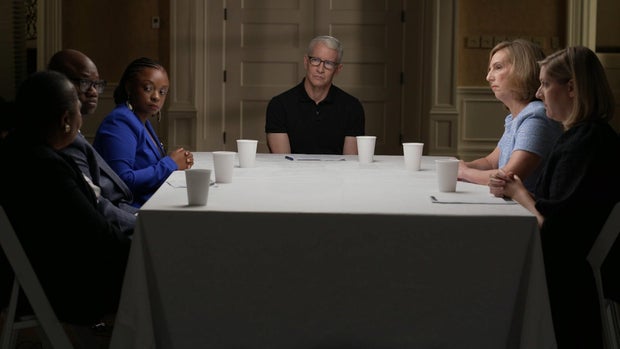The last known U.S. slave ship was too “damaged” and rotted to be extracted from the murky waters off Alabama’s Gulf Coast without being dismembered, a task force of archaeologists, engineers and historians announced after a years-long investigation.
A task force led by the Alabama Historical Commission said Thursday that the Clotilda, the last ship known to transport enslaved Africans to the United States, had been cut in half by a large vessel and was badly damaged by bacteria. The 500-page report said the “responsible” way to recall the ship would be to protect the ship under water that was discovered in 2019.
“There is no other site in the world that provides physical evidence like Clotilda,” said James Delgado, the lead marine archaeologist on the investigation who said the priority was preserving the physical evidence. “Clotilda is a crime scene, so everything we do is by way of crime scene investigation.”
The wooden schooner at the heart of this investigation was commissioned in 1860 by Timothy Meahera year before the Confederacy was created and a decade after the importation of slaves was punishable by death in 1808. Captain William Foster, the ship traveled to West Africa and smuggled 110 Africans illegally to Alabama. Foster then tried to burn and sink the ship to hide the crime.
SEARCH, Inc./Alabama Historical Commission
After the Civil War freed the survivors from Clotilda, historical records show 32 of them bought land from Meaher and established what is now Africatown, officially known as Plateau, about 3 miles north of Mobile.
As “60 Minutes” reported last year, Africatown is now the only surviving community in America founded by Africans. Some of his descendants still call it home.
The remains of the ship remained, unknown in the brackish Mobile River until 2019. On Thursday, the task force presented photographs of some of the hull remains extracted during the investigation – evidence that supports the story documented by historians and community members for decades .
Before the state-funded $1 million investigation, it was unclear how the ship could have survived more than 160 years in the water. Some had hoped it would be intact enough to be fully excavated and turned into a museum on land.
“Museums have power, and the ship loses its power if it’s in the water,” said Ben Raines, a former local journalist who wrote a book about the Clotilda.
Raines said he remains optimistic the ship can be excavated and turned into a museum because the task force says that option is still scientifically and technically feasible. Raines said the museum will be an important resource for all descendants of slaves in the U.S. and could generate much-needed income for the Africatown community. Many residents who attended Thursday’s meeting expressed similar sentiments.
Delgado didn’t rule out that option, but said the process would require the ship to be dismantled “piece by piece, nail by nail,” and could compromise the few remaining physical clues to the experiences of the slaves aboard.
The main historical evidence includes the lower hull where enslaved Africans were held captive. Deep-water diving revealed the locked rooms where 110 people were held were largely intact.
“It’s so scary”
The president of the Clotilda Descendants Association, Jeremy Ellis, became visibly emotional as Delgado shared the details of the compartment where his ancestors were kept.
“Because we’ve been able to learn more about what they’re going through and how small the cargo is and how it’s on top of each other, it’s been really exciting,” said Ellis, who is in his 40s and has six. Clotilda’s descendants survived Pollee and Rose Allen. “And it makes me want to continue my efforts at reconciliation and healing for posterity.”
Instead of excavation, the report suggested a plan that would preserve the underwater structure by placing large pillars around the ship to protect it from other ships and boats. The ship sank in a designated Wildlife Management Area and the town is listed on the National Register of Historic Places, which means the process requires the US Army Corps of Engineers to get federal permission to install the protection. A representative of the Army Corps of Engineers who has been an integral part of the investigation said the process could be completed in a few months as long as there is no serious conflict between environmental protection and the needs of the ship.
The discovery of the ship in 2019 sparked a long-running debate about how to deal with Clotilda’s terrible legacy, especially for direct descendants who survived. The Meaher family still has millions of dollars in real estate holdings in the area, as well as parks and streets that bear the family name.
Last summer, descendants of enslaved Africans and descendants of slave owners paid their way to America. sit together in a historic meeting to talk about reconciliation, after years of effort to prepare for the meeting.
60 minutes
Zora Neale Hurston’s best-selling book “Barracoon” chronicles the life of Cudjo Lewis, Clotilda’s last enslaved African. Released in 2018, “Barracoon” includes the story of Lewis’s upbringing in Africa, his experiences on the slave ship and as a slave, and a section on discovering Africatown. Lewis died in 1935 at the age of 94.
As a result, Africatown and Clotilda are often cited in national conversations about reparations.
Ultimately, the task force said the underwater preservation plan would only protect the structure for about 100 years before it erodes. He added that the timeline could be shortened due to climate change, which will affect the level, temperature and salinity of the water around the ship.
But many of his descendants say the ship remained underwater.
Veda Robbins, 55, is also a sixth-generation descendant of Pollee and Rose Allen. Robbins grew up in nearby Mobile but clearly remembers going to her great aunt’s house in Africatown as a child. Robbins got married in the local Africatown church and later baptized his children there.
Robbins said the ship is not concerned with the need to revitalize the Africatown community, which has been ravaged by environmental contamination and disinvestment since its inception.
“I don’t want to see ships take up space in the community that could be used for housing and things for the community,” Robbins said. The population of the unincorporated town was less than 2,000.
Robbins expressed the official position of the Clotilda Descendants Association: In the end, the ship is less important than the stories of the survivors, along with the descendants who have fought to keep the Africatown community alive.






